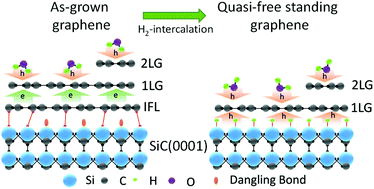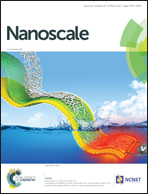Tuning epitaxial graphene sensitivity to water by hydrogen intercalation†
Abstract
The effects of humidity on the electronic properties of quasi-free standing one layer graphene (QFS 1LG) are investigated via simultaneous magneto-transport in the van der Pauw geometry and local work function measurements in a controlled environment. QFS 1LG on 4H-SiC(0001) is obtained by hydrogen intercalation of the interfacial layer. In this system, the carrier concentration experiences a two-fold increase in sensitivity to changes in relative humidity as compared to the as-grown epitaxial graphene. This enhanced sensitivity to water is attributed to the lowering of the hydrophobicity of QFS 1LG, which results from spontaneous polarization of 4H-SiC(0001) strongly influencing the graphene. Moreover, the superior carrier mobility of the QFS 1LG system is retained even at the highest humidity. The work function maps constructed from Kelvin probe force microscopy also revealed higher sensitivity to water for 1LG compared to 2LG in both QFS 1LG and as-grown systems. These results point to a new field of applications for QFS 1LG, i.e., as humidity sensors, and the corresponding need for metrology in calibration of graphene-based sensors and devices.



 Please wait while we load your content...
Please wait while we load your content...